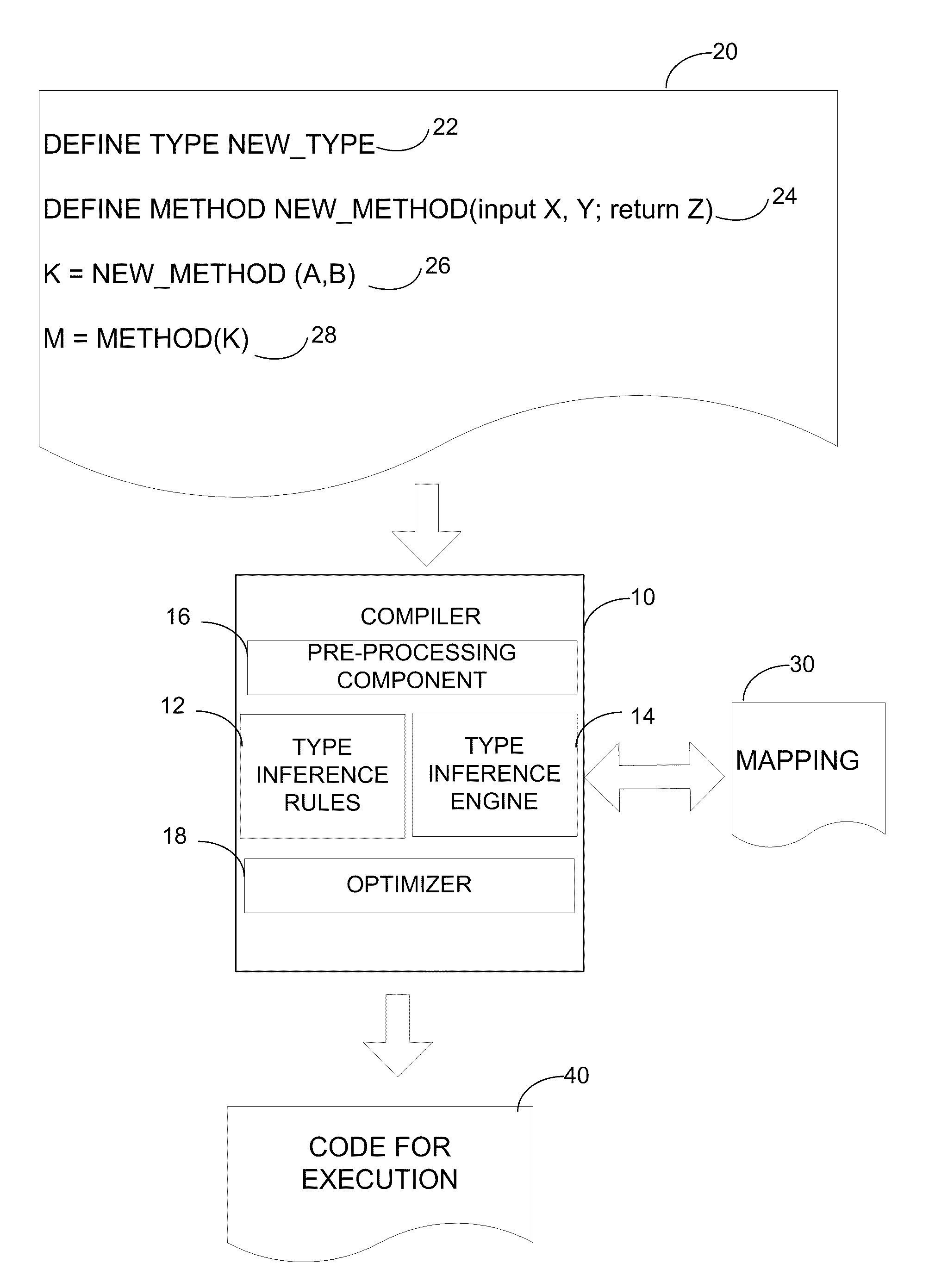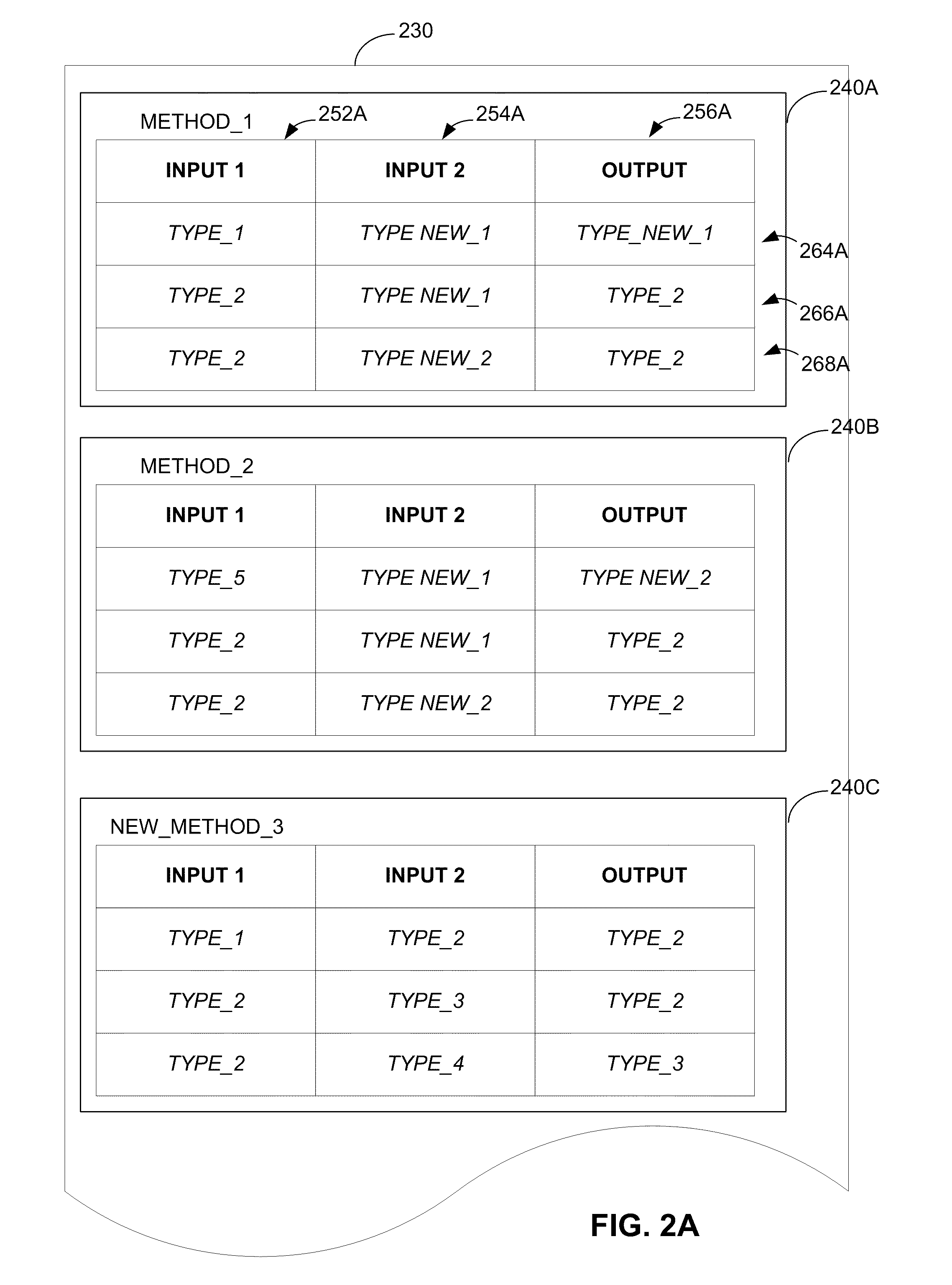Compiler with user-defined type inference rules
a type inference and user-defined technology, applied in computing, instruments, electric digital data processing, etc., can solve problems such as limiting flexibility for programmers, and achieve the effect of improving dynamic languag
- Summary
- Abstract
- Description
- Claims
- Application Information
AI Technical Summary
Benefits of technology
Problems solved by technology
Method used
Image
Examples
Embodiment Construction
[0021]Ease of programming and program efficiency may both be achieved with a compiler for a dynamic language that can perform type inference for methods that have a user-defined element. A method may be regarded as having a user-defined element because one or more inputs are in a type that has been user-defined. Though, the method may also be regarded as having a user-defined element if the method has itself been user-defined.
[0022]In this context, it should be appreciated that “user-defined” implies an aspect of a programming language that is not defined as part of the dynamic language but is, instead, specified during application of the dynamic language. A user-defined aspect may be defined based on express user input, which may be entered into a file or other data store using editing or authoring tools as are known in the art of software development. Though, it should be appreciated that the user-definition need not be expressly authored by a user. For example, the definition may...
PUM
 Login to View More
Login to View More Abstract
Description
Claims
Application Information
 Login to View More
Login to View More - R&D
- Intellectual Property
- Life Sciences
- Materials
- Tech Scout
- Unparalleled Data Quality
- Higher Quality Content
- 60% Fewer Hallucinations
Browse by: Latest US Patents, China's latest patents, Technical Efficacy Thesaurus, Application Domain, Technology Topic, Popular Technical Reports.
© 2025 PatSnap. All rights reserved.Legal|Privacy policy|Modern Slavery Act Transparency Statement|Sitemap|About US| Contact US: help@patsnap.com



